
views
Testing on a Reflective Surface
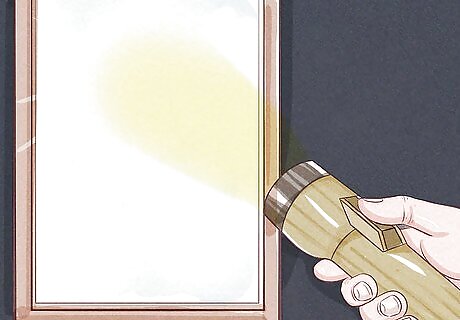
Find a reflective surface that produces glare when light is shining on it. You could use a reflective tabletop, a mirror, or other shiny, flat surface. Make sure the glare is noticeable even from about 2 to 3 feet (60 to 90 cm) away. If you need to produce glare, you can turn on overhead lights or shine a flashlight on a reflective surface.

Hold your sunglasses about 6 to 8 inches (15 to 20 cm) in front of your eyes. You should be able to view the surface through one of the lenses at a time. Depending on the size of the lenses in your sunglasses, you might need to move them a little closer to your face.

Rotate the sunglasses upwards to a 60 degree angle. Your sunglasses should be on an angle at this point, with one of the lenses raised slightly higher than the other. Since sunglasses are polarized in a specific direction, rotating the sunglasses can make the polarization more effective. Depending on how the glare is hitting the surface, you might have to slightly adjust the angle of the glasses to see a noticeable difference.

Look through the lens and check the level of glare. If the sunglasses are polarized, you will notice the glare disappears. When you look through one of the lenses, it should be very dark and you should see little to no glare, but it will still look like the light is shining on the surface. Move the sunglasses to compare your regular eyesight to what you see through the sunglasses a few times if you’re unsure of the effectiveness of the polarization.
Comparing Two Pairs of Sunglasses
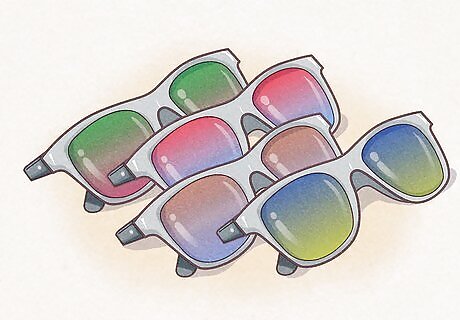
Locate a pair of sunglasses that you know are polarized. If you already have a pair of sunglasses that are polarized, or are at a store with multiple pairs of polarized sunglasses, you can do a comparison test. The test is only effective with another pair of polarized sunglasses.

Hold the polarized pair of sunglasses out and the other pair in front of them. Align the lenses in your eyeline, making sure they’re about 1 to 2 inches (2.5 to 5.1 cm) apart. You’ll want the questionable pair of sunglasses to be closest to you, and the polarized pair to be farther away. Make sure the lenses don’t touch each other, as this can cause scratches on the coating.
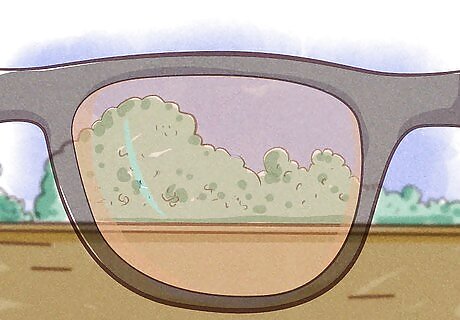
Position the sunglasses in front of a bright light for more dramatic results. This will help make the test a little easier, especially if it’s your first time comparing sunglasses this way. The light will make the shading more distinct. You can use natural light coming in from a window or artificial light like overhead lighting or a lamp.
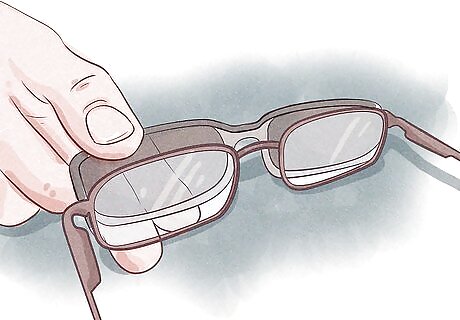
Rotate the questionable sunglasses by 60 degrees. One of the lenses should be diagonal from the other lens, and the polarized sunglasses should stay in the same position. Only one of the lenses will still be aligned with the other pair. It doesn’t matter which way you rotate the sunglasses, but make sure you hold both pairs of lenses steady.

Look at the overlapping section of the lenses to see if it’s darker. If both pairs of sunglasses are polarized, the overlapping lenses will appear to be darker when you look at them straight on. If the questionable pair isn’t polarized, there won’t be a difference in color. You can compare the overlapping lenses to the color of the lenses that aren’t overlapping.
Using Your Computer Screen
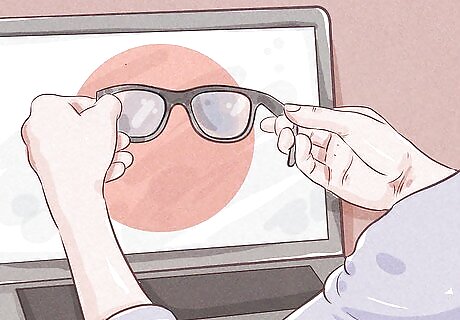
Turn your computer screen to its brightest setting. Most electronics have the same anti-glare technology as polarized glasses. You’ll be able to test the polarization by looking at the screen. Open a white screen, because the brightness will make the effect of the test more prominent.

Put on your sunglasses. Once you’re in front of the computer, just put the sunglasses on like you’d normally wear them. Make sure you’re sitting directly in front of the screen. It might be helpful to elevate your computer screen to eye level if it isn’t already positioned there.
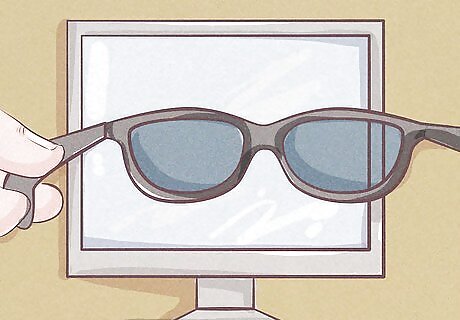
Tilt your head 60 degrees to the left or right. While you’re in front of the screen, tilt the top of your head to the left or right side of your body. If the sunglasses are polarized, the screen will appear to turn black due to the anti-glare properties cancelling each other out. If one side doesn’t work, try tilting your head to the other side. If that doesn’t work, the sunglasses are not polarized.













Comments
0 comment